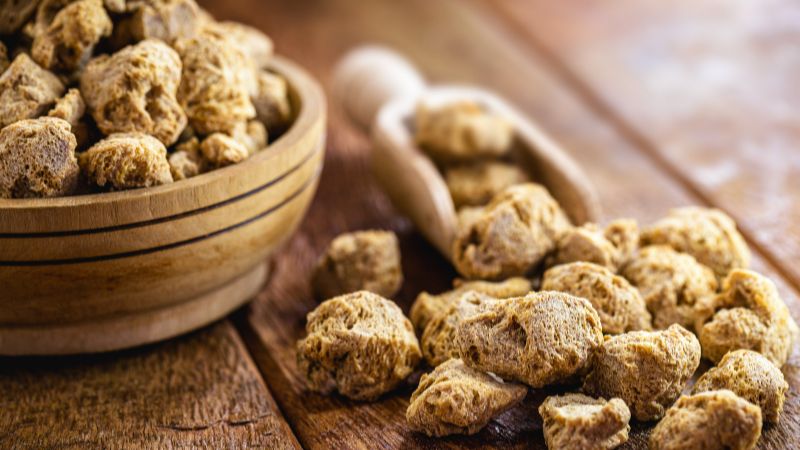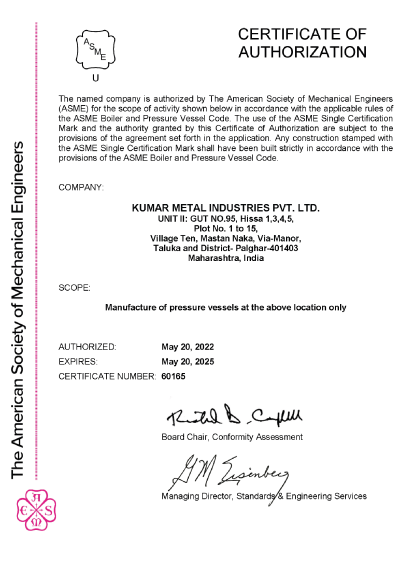
Soybeans are an important source of vegetable protein which is often used to replace animal proteins in the diet, suitable for all ages. Soybean is a legume that contains no cholesterol and has low saturated fat (or oil) content. Soybeans are the only vegetable food that contains all eight essential amino acids. In all, soybeans have about twenty amino acids. Soybeans are also a good source of fiber, iron, calcium, zinc, and B vitamins.
Soybean oilseeds are mainly cultivated in the following states of India – Madhya Pradesh (MP), Maharashtra, Rajasthan, Andhra Pradesh (AP) [recently split into two states – Telangana, Seemandhra], Chhattisgarh, Gujarat, Karnataka. Madhya Pradesh and Maharashtra account for the major share of soybean production, amounting to about 100 million MT per year.
The following table presents area harvested, production and productivity of soybean in India during the past several years.
Soybean protein concentrates contain about 70% protein. Soybean concentrate is basically defatted soybean flour without the water-soluble carbohydrates. Soybean protein concentrate retains most of the fiber of the original soybeans. Soybean or soy protein concentrates are available in different forms commercially – granules, flour, and spray dried.
Soybean protein isolates are highly refined or purified forms of soybean protein. They contain minimum 90% protein on moisture-free basis. Almost all the non-protein components are removed from the starting raw material, i.e., defatted soybean flour, to make soybean protein isolate. Therefore, it has a neutral flavor.
PRODUCTION METHODS
Production of soybean protein concentrates involves immobilization of soybean globulin proteins while allowing the soluble carbohydrates, soybean whey proteins and salts to be leached from the defatted soybean flour or flakes. Various treatment methods are used to retain the protein from the heat-treated defatted soybean flour, such as leaching with 20 to 80% aqueous alcohol or solvent or with aqueous acids in the isoelectric zone of minimum protein solubility, at pH 4 to 5; or leaching with chilled water which may contain calcium or magnesium cations; or leaching with hot water. One or more of these treatments may be used to prepare soybean protein concentrates of the desired concentration and properties. All these processes result in soybean protein concentrates with 70% protein, 20% carbohydrates, 2.7 to 5% crude fiber, 6% ash and about 1% triglyceride oil. However, the solubility may differ. Generally, one tonne (MT) of defatted soybean flakes yield about 750 kg of soybean protein concentrate. These concentrates are produced either as granules, flour or spray-dried powder, depending on the targeted end-use.
Food grade or edible soybean protein isolates are produced by aqueous extraction of soybean flour, at a pH below 9. The aqueous extract is filtered or clarified to remove the insoluble material. Then it is acidified to a pH between 4 and 5. The protein is precipitated in “curd” form and is separated from the whey by centrifuge. This protein “curd” is then neutralized with alkali to obtain the sodium salt of soybean protein, called as sodium proteinate salt. It is then dried to produce the soybean protein isolate powder.
Industrial grade soybean protein isolates were first commercially produced in 1936, while the first food grade soybean protein isolates became commercially available in 1959.
SPECIFICATIONS
FAO has published general standards or specifications for soybean products covering soybean flour, concentrate and isolate.

[NOTE: Crude protein content = N X 6.5, on dry weight basis]. [Source – FAO/WHO – Standard CXS 175-1989. Amended in 2019.]
According to the standard, these soybean protein products may contain several other optional ingredients such as, carbohydrates including sugars, edible fats and oils, other protein products, vitamins and minerals, salt, herbs and spices.
APPLICATIONS
Soybean protein isolates are full-value protein food additives having protein content of more than 90% and are used mainly in food products. About twenty different amino acids are present in soybean protein isolates including all the essential amino acids. It can replace animal protein. Soybean protein isolates can be used in meat products, minced meat ham sausages, emulsified sausages, surimi and other sea foods, quick-frozen prepared products and tumbled products. Soybean proteins are also used in salad dressings, soups, meat analogues, beverage powders, cheeses, non-dairy creamers, frozen desserts, whipped toppings, infant formulae, bread, breakfast cereals, and pastas. Functionally, soybean protein isolates are mainly used to improve the texture of meat products, but are also added to increase protein content, to enhance moisture retention, and as an emulsifier.
Pure soybean protein isolates are also available in pharmacies as a part of nutritional formulations along with other food ingredients.
Soybean protein concentrates are widely used as functional or nutritional ingredients in a wide range of food products, mainly in bakery products, breakfast cereals, and in some meat products. They are used in meat and poultry products to increase water and fat (oil) retention and to improve nutritional values, i.e., to increase the protein content and reduce the fat. Soybean protein concentrates are very digestible and therefore are well-suited for children, pregnant and lactating women and the elderly people. They are also used in milk replacements, pet foods, as well as in some non-food applications.
Increased acceptance of soybean proteins is due to unmatched qualities like good functional properties in food application, high nutritional quality, abundance, availability, and low cost. Various forms of soybean proteins are primarily utilized for their functional effects rather than their nutritional properties.
Animal feed grade soybean protein generally has a protein content of about 65%, and is specially formulated for pigs, cattle, fish, and pet foods.
The largest use of industrial grade soybean protein is in paper coatings. Soybean protein is used for emulsification and texturising. It is also used in adhesives, asphalts, resins, cleaning materials, cosmetics, inks, paints, leather, pesticides and fungicides, plastics, polyesters and textile fibers.
Interestingly, people throughout East Asia have consumed soybeans for more than 2000 years in the form of traditional soybean foods, such as nimame (cooked whole soybeans), edamame (green fresh soybeans), soybean (or soy) milk, tofu, kori-tofu (freeze-denatured and dry tofu), abura-age (deep-fat-fried tofu), sufu or tofu-yo (fermented tofu), soybean (or soy) sauce, miso, natto, tempeh, etc. In Western countries, soybeans attracted attention only in the 1960s as an economical and high quality vegetable protein source for humans. Much higher quantities of raw soybeans are consumed in East Asia through preparation of traditional products as compared to those in the Western countries, where the soybean-based products are mainly made from the derivatives of soybean, such as soybean flour, protein concentrates or isolates. Confirmation by the US FDA of the soybean protein health claim, i.e., ‘25 g of soybean protein a day may reduce the risk of heart disese’, has probably boosted the consumption of soybean-based food products in the western countries as well as the world over.
TEXTURED SOYBEAN PROTEIN (TSP)
Textured (or texturized) soybean protein (or TSP) is another physical form of soybean protein, which is produced either from soybean flour or soybean protein concentrate. TSP is also called as soybean (or soy) meat or soy chunks. TSP produced from soybean flour contains 50 % protein while that made from soybean protein concentrate contains 70% protein. Water required to rehydrate these textured soybean proteins differ – TSP made from soybean flour is rehydrated before use at a weight ratio of 1 TSP : 2 water. TSP produced from the concentrate needs the TSP:Water ratio of 1:3 for rehydration.
Textured soybean protein (TSP) is produced by forming a dough from highly soluble (i.e. having high NSI) defatted soybean flour or soybean protein concentrate with water in a screw type extruder, and heating with or without steam. The dough thus formed is extruded through a die while still hot, to obtain various shapes – granules, flakes, nuggets, grains, strips, chunks, goulash, etc. These shapes are then dried in an oven. The sizes of the TSP also differ.
Generally, TSP is produced by heating the soybean flour or concentrate to about 150 to 200 deg. C, which denatures the protein into a fibrous, insoluble, porous network that can soak up as much as three times its weight in liquids. As the pressurized molten mixture comes out of the extruder, the sudden pressure drop results in rapid expansion of the protein into a puffy solid in the shape of the die. It is then dried as mentioned earlier.
As the structure of the soybean protein changes to a fibrous, spongy matrix similar in texture to that of meat, during the extrusion process; textured soybean proteins are used to replace meat. A wide range of food products with these meat-replacing TSPs are available in the market, globally. Shelf life of dry TSP is more than a year at room temperature but the rehydrated TSPs need to be consumed immediately or within three days, if stored in a refrigerator.
It must be noted here that similar products, i.e., textured vegetable proteins, can be produced from other raw materials, such as oats, wheat and cottonseeds.
Textured soybean protein (and other textured vegetable proteins) is commonly used as meat substitutes due to its lower cost at less than a third of the price of ground beef. When cooked together, TSP helps retain more nutrients from the meat by absorbing juices which are normally lost. Many a vegetarian or vegan versions of traditional meat-based dishes are made using textured soybean protein.
HEALTH BENEFITS
Several health benefits have been attributed to soybean proteins. It is a good alternative for meat protein. It lowers cholesterol level in humans while boosting muscle growth. Soybean protein has been claimed to prevent heart diseases and found to control obesity and diabetes. It is useful as an energy booster and pregnancy tonic. Soybean protein has been claimed to prevent cancer. It has been found to reduce menopausal symptoms and improve skin. Soybean protein has been shown to support health needs across the lifespan as a source of lean, cholesterol-free and lactose-free protein. Soybean protein is one of the most studied ingredients from the standpoint of nutritional efficacy and health benefits.
You might find these interesting:
Understand the processing, uses and specifications of soybean oilseeds, oil and meal
Learn how to optimise your Soybean Oil Milling Processes with The Anderson Dox™ Extruder
Explore the global commercial aspects of soybean oilseeds, oil and meal
For 82 years, Kumar has been delivering dependable process engineering solutions to the oils and fats industry. We're known for our robustly engineered, versatile and operationally profitable plant and machinery. It's why over 500 customers in 65 countries depend on us to solve their processing challenges, big or small. If you’d like to know more about our solutions please fill out the form below:
"*" indicates required fields



















